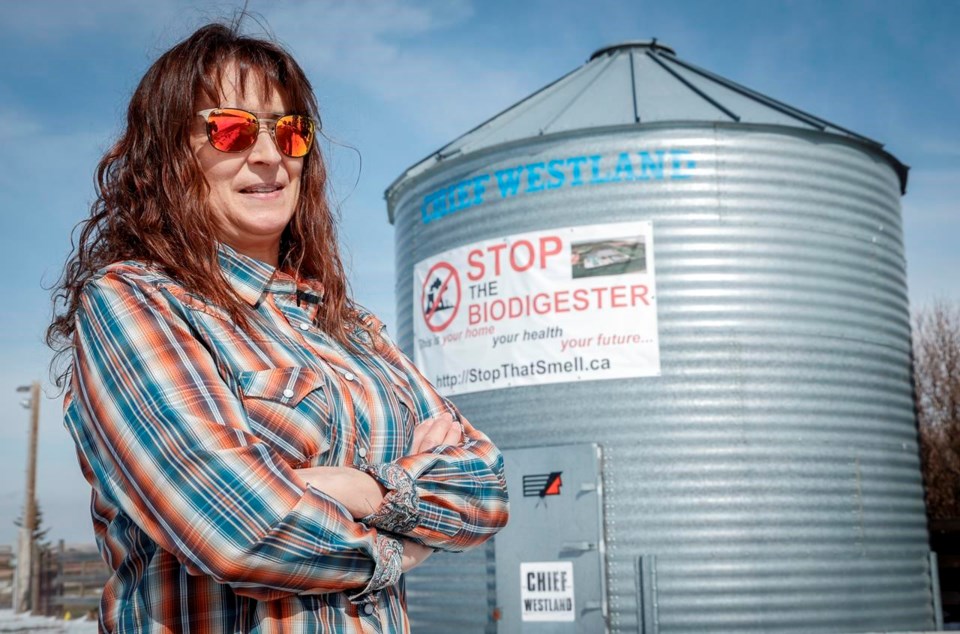An Alberta environmental group opposes a solar power project over concerns it would damage antelope habitat and block their migration.
Homeowners in the province are fighting a renewable natural gas proposal over fears it would hurt air quality and strengthen already powerful odours.
As Alberta slowly builds a climate change-friendly energy grid, conflicts between different environmental values are going to become more frequent, experts say.
"All energy development has impacts," said Sara Hastings-Simon, a professor in the School of Public Policy at the University of Calgary.
"As we see more development happening, there will be more conflicts."
One example is the Aira solar project near the town of Bow Island in southern Alberta.
The project would provide 450 megawatts of carbon-free electricity to the provincial grid, but opponents fear its location would damage native grasslands and block herds of antelope as they migrate north from the U.S.
"Antelope can't migrate through chain-link fences," said Cliff Wallis of the Alberta Wilderness Association.
The company has promised to build lanes for the animals to pass through. But Wallis said antelope are unlikely to use them.
"All we're doing is opening up the door to these projects and not figuring out where is the best place to put them," he said.
Further north, near the town of High River, Benita Estes has been fighting a large biodigester project that would turn manure into enough natural gas to power 6,000 homes.
Proponent Rimrock Renewables concedes the plant's odours would sometimes exceed provincial guidelines, even with the upgraded control mechanisms it recently announced.
"Biogas (projects) are great, if they're in small areas," Estes said. "This one is a monstrosity."
The Alberta Utilities Commission, which licenses renewable power projects, is tasked with weighing environmental concerns against each other. It recently turned down a solar project over concerns about impacts on native grassland.
Ryan Fournier, spokesman for Alberta Environment Minister Rebecca Schulz, said the commission is up to the job.
"Each project proponent sends the department a submission that identifies wildlife species and vital habitats, assesses species concern, details how they will meet wildlife directive standards and proposes ways to minimize the risks," he said in an email.
But Alberta needs to unpack more of the tools it already has to manage such conflicts, said Jason Wang of the clean energy think-tank the Pembina Institute.
He points out Alberta has been divided into seven regions for land use planning. Two of those plans have been completed and one — the South Saskatchewan plan, where most renewables development is concentrated — is about to face a 10-year review.
"The intention of these regional land use plans was to do that sort of long-term planning with communities," said Wang. "They can be challenging, but (the province) should finish that approach."
Part of the challenge is differentiating legitimate concerns from those with a not-in-my-backyard mindset, said Hastings-Simon.
"Some of the objections to renewable energy can be traced back to groups trying to prevent renewable energy," she said.
"If done well, renewable energy has significant less impact," she said. "But we do need to think about where that's going to be."
Wallis, with the Alberta Wilderness Association, said environmental impacts have to be understood more broadly than just climate change.
"We're facing two crises," he said. "We don't want to trade off biodiversity to mitigate only climate change.
"We can do both if we're smart about it."
Estes said projects such as the biogas one she opposes should be regulated for what they are.
"They're trying to sell these projects as agricultural when they're actually industrial. It's not being put on industrial-zoned land."
Craig Snodgrass, who's in the middle of such quarrels as High River's mayor, said conflicts are likely to increase as Alberta's population grows.
"Everybody's trying to do more renewable things, but there's a negative side to it as well," Snodgrass said.
"A better way to manage that, that our government could be doing a better job of, is putting people first — looking at the human being first rather than putting industry first."
This report by The Canadian Press was first published April 12, 2024.
Bob Weber, The Canadian Press




